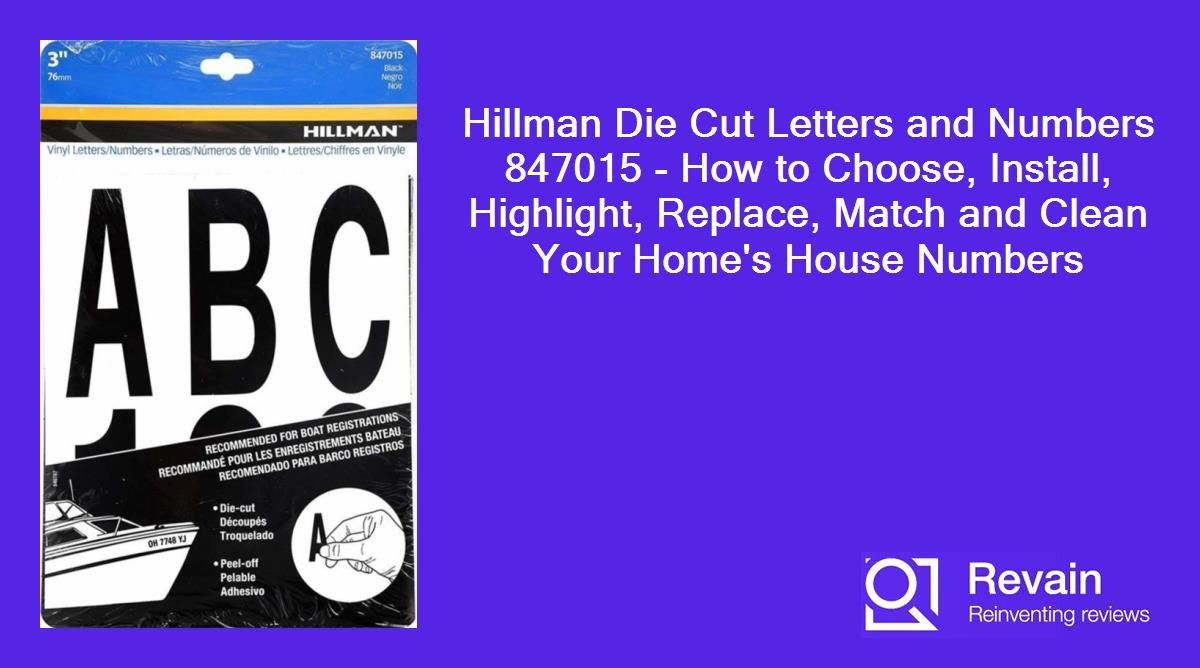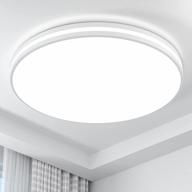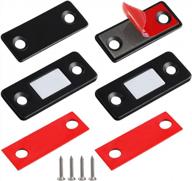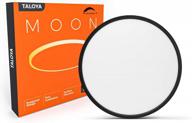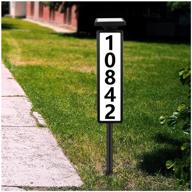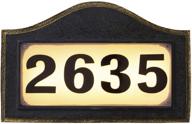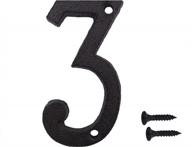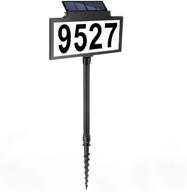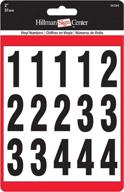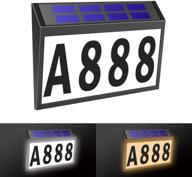Similar products
How to choose the right size house numbers for your home?
Choosing the right size house numbers is important for visibility and aesthetics. Follow these tips to select house numbers that are functional and complement your home's style:
Consider the distance from the street
- The further your home is set back from the street, the larger your house numbers need to be for legibility.
- For homes more than 50 feet from the street, 6-8 inch tall numbers are recommended.
- Homes 25-50 feet away can use 4-6 inch numbers.
- Up close houses under 25 feet away only need 3-4 inch numbers.
Factor in the size of your home
- Larger homes can accommodate bigger house numbers that are proportional.
- Smaller homes may look best with more modest 3-4 inch numbers.
- For multi-family buildings, increase number sizes since you need multiple visible units.
Consider contrast and visibility
- Dark colored numbers show up better on light backgrounds.
- Light or metallic numbers work on dark surfaces.
- Reflective or illuminated numbers are ideal for low light conditions.
With the right sized house numbers, your home will look great and your address will be easily visible from the curb. Drive by at night to test visibility before permanently installing your new numbers.
How to install house numbers that are visible from the street?
Installing house numbers that can be clearly seen from the curb will make your home easier to identify for visitors, delivery drivers and emergency responders. Follow these tips for optimal visibility:
Choose a location
- Place numbers near your main entrance, above the door or on an outer wall.
- Position them where unobstructed by trees, bushes or architectural elements.
- Illuminated numbers look best above the door or on a porch ceiling.
Mount at the proper height
- Mount the numbers 60-66 inches above the ground.
- This puts them in the eyeline of someone standing on the street.
- Make sure they are not blocked by parked cars.
Check for contrast
- Dark numbers on a light background work best.
- Light or metallic numbers for dark surfaces.
- Use reflective backing for maximum visibility at night.
Consider lighting
- Illuminate numbers with a porch light or spot lighting.
- Invest in light-up house numbers if your entrance is poorly lit.
- Solar powered numbers work well if you don't have an outdoor electrical outlet.
Doing a walk-by from the curb after installing your house numbers lets you see them as visitors do. Make any adjustments to ensure your address displays clearly.
How to make house numbers stand out for easier identification?
Making your house numbers clearly visible and identifiable from the curb can be challenging. Use these creative techniques to make them stand out:
Contrast with the background
- Black or dark blue on white siding has great contrast.
- White/light numbers pop against brick or stained siding.
- Use reflective backing for maximum nighttime visibility.
Incorporate creative materials
- Stainless steel, copper or aluminum numbers add style.
- Opt for shaped, architectural or mosaic tile numbers.
- Try 3D or raised numbers for shadow and depth.
Highlight with color
- Paint your house trim color in a bolder hue.
- Try two-toned numbers like black outlined in red.
- Use brightly colored numbers that match your personality.
Illuminate the numbers
- Install sconce lighting right above the numbers.
- Choose illuminated, LED or solar powered numbers.
- Highlight with landscape lighting from nearby trees.
Increase the size
- Oversized numbers (8-10 inches) grab attention.
- Extend numbers over two rows for a dramatic look.
- Place duplicate small numbers at eye level on mailboxes or walls.
With creative thinking, you can transform your house numbers from boring to eye-catching. Test out different techniques to find the right solution for your home's style.
How to replace faded or damaged house numbers?
Over time, your house numbers can fade, chip or sustain other weather damage. Replacing them helps maintain your home's curb appeal and address identification.
Remove the old house numbers
- Use a razor blade to scrape off adhesive remnants.
- For screw-mounted numbers, use the appropriate drill bit to remove.
- Take down old numbers that are painted on.
Prepare the surface
- Repair and repaint the wall or door surface if needed.
- Ensure the surface is clean and dry before installing new numbers.
- Paint a contrasting background color for enhanced visibility.
Measure carefully
- Note the height, length and spacing of your old numbers.
- Decide if you want to increase the size for better visibility.
- Account for two rows if your house number is more than one digit.
Install the new numbers
- Adhesive numbers stick onto smooth surfaces like vinyl or metal.
- Use screw or anchor mounting for textured surfaces like stucco or brick.
- Follow manufacturer’s instructions for specialized numbers like lighted or solar powered.
Test visibility
- View the installed numbers from the sidewalk and street.
- Make alignment adjustments or increase size if needed.
- Check nighttime visibility and add lighting if poor.
With fresh, quality house numbers properly installed, your home's address will look great and be legible from the curb.
How to coordinate house numbers with your home's style?
Matching your house numbers to your home's architectural style lends a cohesive, polished look. Consider these design tips:
Traditional suburban home
- Opt for simple, yet elegant black numbers in a classic font like Helvetica.
- Wrought iron numbers in roman numerals or script fonts work too.
- Place numbers prominently near the front door or mounted on porch columns.
Colonial style house
- painted wood or metal numbers complement colonial charm.
- Serif font styles like Times New Roman match traditional aesthetics.
- Display on door surrounds, entry columns or shutters for symmetry.
Modern contemporary home
- Sleek stainless steel or aluminum numbers in a sans-serif font fit best.
- Backlit, LED or illuminated numbers add tech-forward style.
- Strategically place near main entrance walkways or landscape lighting.
Rustic cottage or cabin
- Rough-edged wood or rusty metal numbers suit the pastoral vibe.
- Stencil-style numbers in an outdoorsy font like Pescadero work well.
- Display prominently above the door or at end of driveway.
For unique homes, customize numbers by:
- Using favorite colors or creative materials like tile or stone.
- Incorporating imagery like pine trees for cabins or beach scenes for seaside cottages.
- Highlighting with lighting that matches outdoor elements like pathway materials.
Coordinating your house numbers with your home’s look makes a great first impression and reflects your style.
Top products in 🏡 House Numbers, Plaques & Signs
How to clean and maintain metal or plastic house numbers?
Regular cleaning keeps your metal or plastic house numbers looking their best. Follow these maintenance tips:
Supplies needed
- Mild dish soap or detergent
- Soft cleaning rag or brush
- Garden hose or power washer
- Metal polish or plastic cleaner
- Sealant for metal numbers
Routine hand washing
- Mix dish soap with warm water in a bucket.
- Use a soft rag to scrub away dirt and grime.
- Rinse numbers thoroughly with clean water.
- Dry with a microfiber cloth to prevent water spots.
Deep cleaning
- Use a power washer on low pressure to blast away stubborn dirt.
- Limit power washing metal numbers to avoid damage.
- For faded plastic numbers, apply plastic cleaner and rinse.
Polishing and sealing
- Apply metal polish to restore luster and shine.
- Seal metal numbers annually to prevent tarnishing.
- Avoid using polish or sealant on plastic numbers.
Winter care
- Remove snow and ice carefully with a plastic scraper.
- Apply touch-up paint on any scrapes or chips.
- Seal metal numbers to prevent salt damage.
With proper care and cleaning, your house numbers will keep your home clearly identified for many years.






